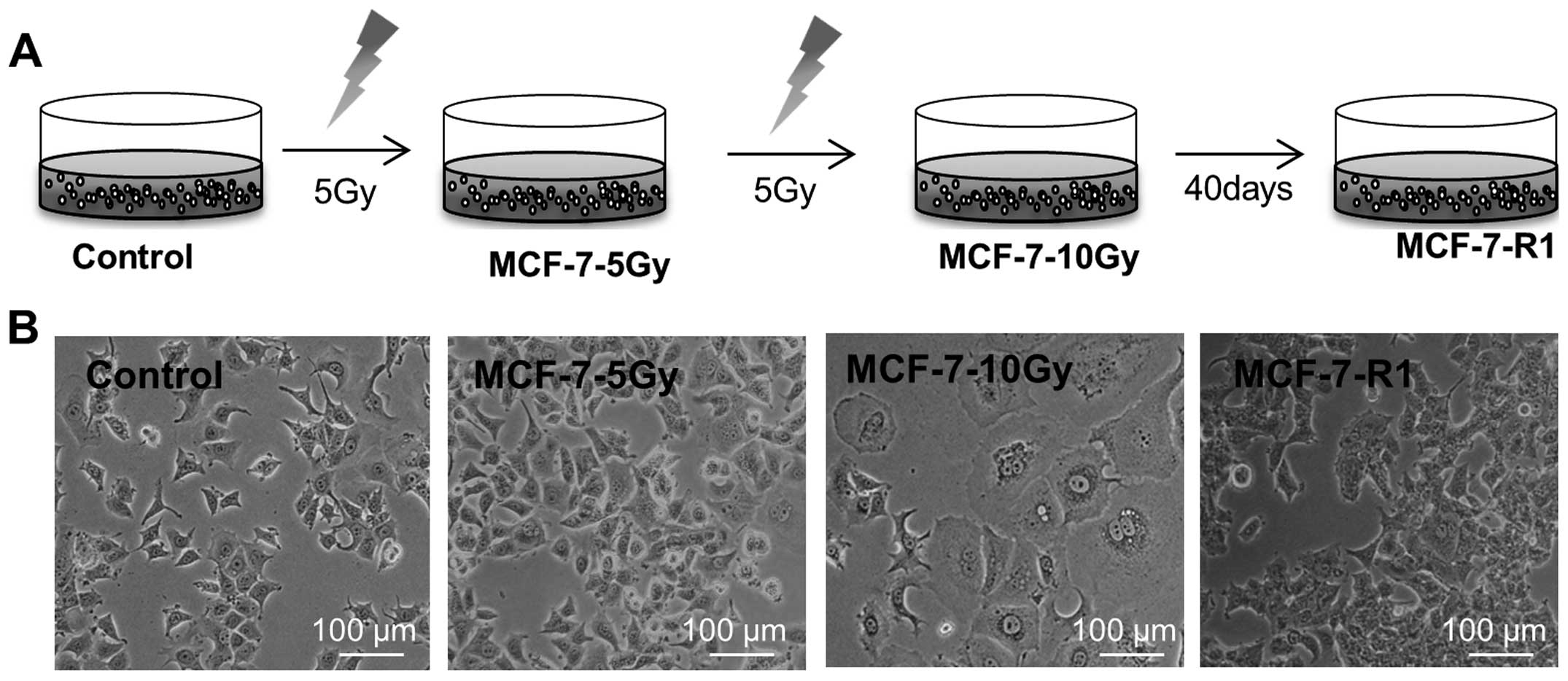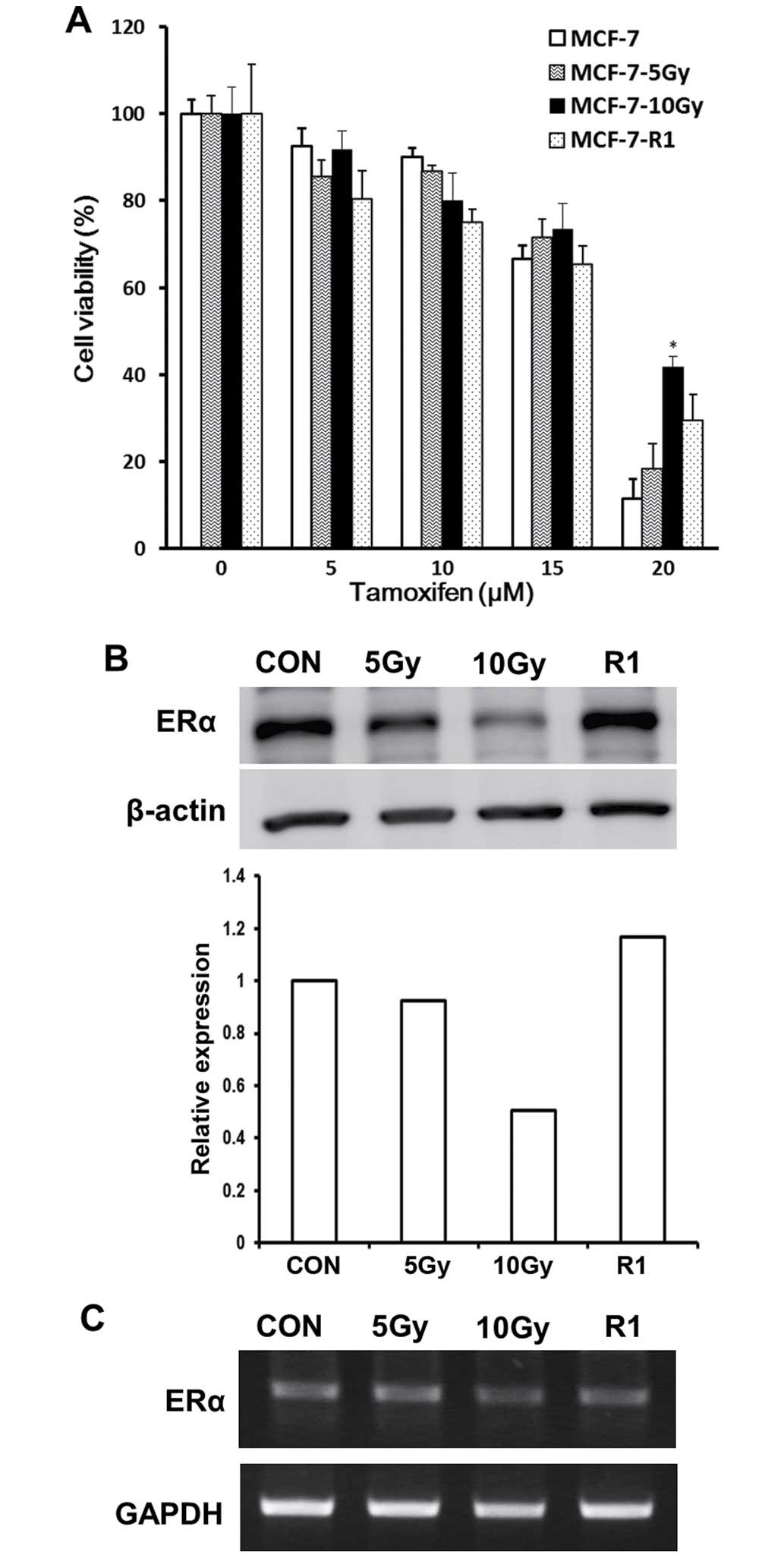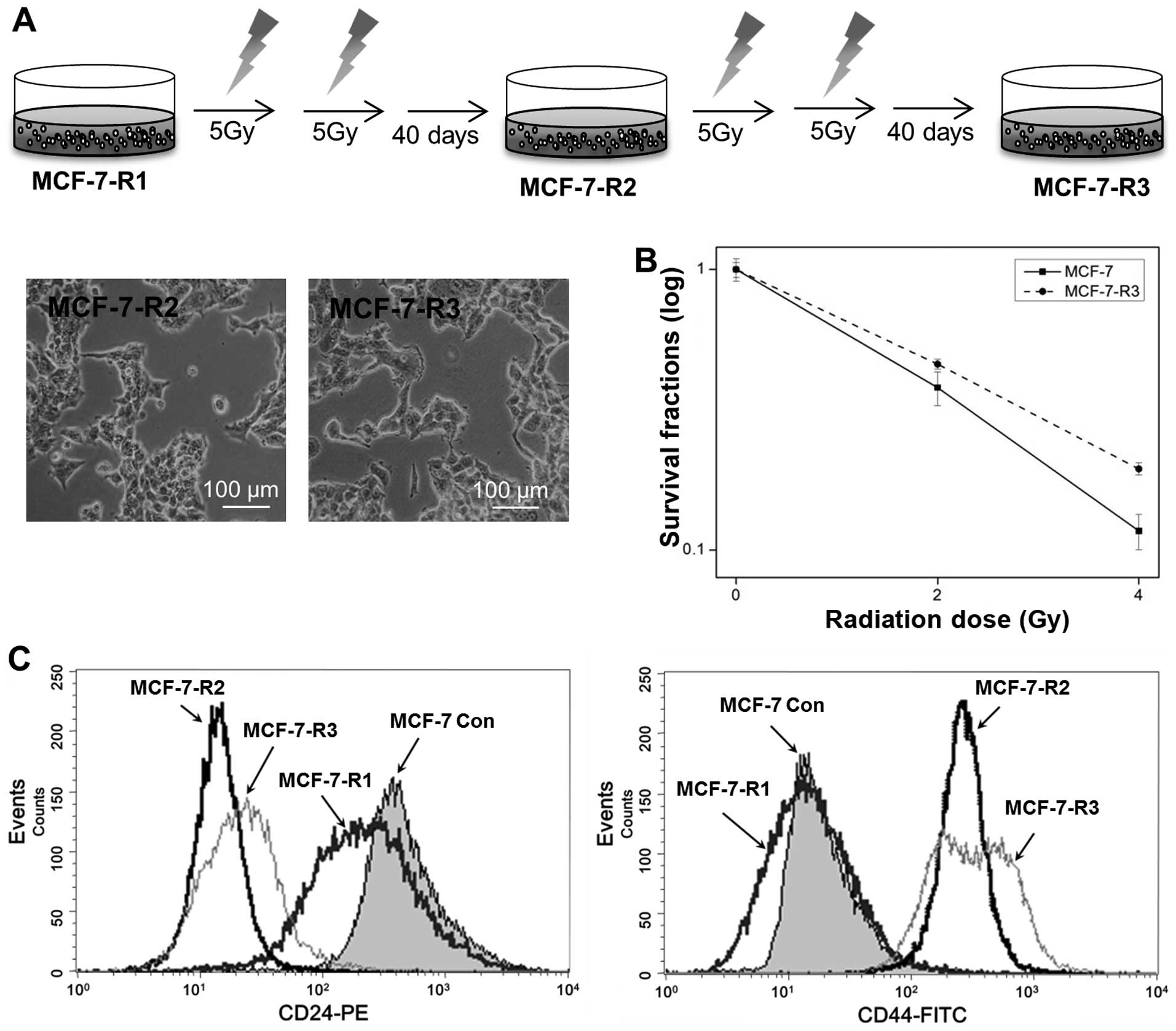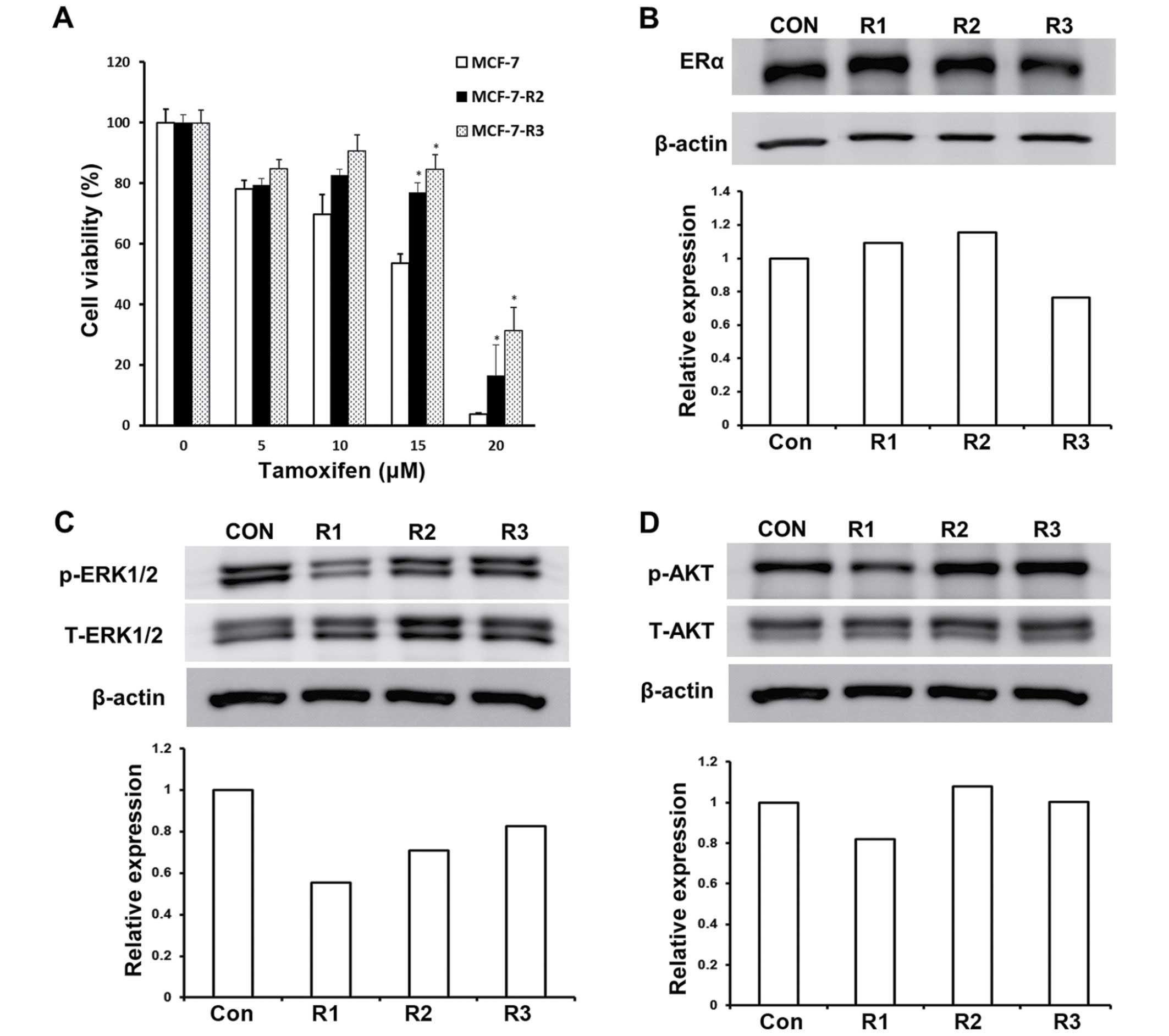|
1
|
National Comprehensive Cancer Network.
Clinical Practice Guidelines in Oncology. 2014, http://www.nccn.org.
|
|
2
|
Komoike Y, Akiyama F, Iino Y, Ikeda T,
Akashi-Tanaka S, Ohsumi S, Kusama M, Sano M, Shin E, Suemasu K, et
al: Ipsilateral breast tumor recurrence (IBTR) after
breast-conserving treatment for early breast cancer: Risk factors
and impact on distant metastases. Cancer. 106:35–41. 2006.
View Article : Google Scholar
|
|
3
|
Arriagada R, Lê MG, Contesso G,
Guinebretière JM, Rochard F and Spielmann M: Predictive factors for
local recurrence in 2006 patients with surgically resected small
breast cancer. Ann Oncol. 13:1404–1413. 2002. View Article : Google Scholar : PubMed/NCBI
|
|
4
|
Ha B, Suh HS, Lee J, Lee KJ, Lee R and
Moon BI: Long-term results of forward intensity-modulated radiation
therapy for patients with early-stage breast cancer. Radiat Oncol
J. 31:191–198. 2013. View Article : Google Scholar
|
|
5
|
Masood S: Estrogen and progesterone
receptors in cytology: A comprehensive review. Diagn Cytopathol.
8:475–491. 1992. View Article : Google Scholar : PubMed/NCBI
|
|
6
|
Early Breast Cancer Trialists'
Collaborative Group (EBCTCG). Effects of chemotherapy and hormonal
therapy for early breast cancer on recurrence and 15-year survival:
An overview of the randomised trials. Lancet. 365:1687–1717. 2005.
View Article : Google Scholar : PubMed/NCBI
|
|
7
|
Fisher B, Dignam J, Bryant J and Wolmark
N: Five versus more than five years of tamoxifen for lymph
node-negative breast cancer: Updated findings from the National
Surgical Adjuvant Breast and Bowel Project B-14 randomized trial. J
Natl Cancer Inst. 93:684–690. 2001. View Article : Google Scholar : PubMed/NCBI
|
|
8
|
Azria D, Pelegrin A, Dubois JB, Mirimanoff
RO and Ozsahin M: Radiation therapy and tamoxifen: concurrent or
sequential? It's no longer the question! J Clin Oncol.
23:4239–4241; author reply 4241–4232. 2005. View Article : Google Scholar : PubMed/NCBI
|
|
9
|
Harris EE, Christensen VJ, Hwang WT, Fox K
and Solin LJ: Impact of concurrent versus sequential tamoxifen with
radiation therapy in early-stage breast cancer patients undergoing
breast conservation treatment. J Clin Oncol. 23:11–16. 2005.
View Article : Google Scholar
|
|
10
|
Whelan T and Levine M: Radiation therapy
and tamoxifen: Concurrent or sequential? That is the question. J
Clin Oncol. 23:1–4. 2005. View Article : Google Scholar
|
|
11
|
Osborne CK, Boldt DH, Clark GM and Trent
JM: Effects of tamoxifen on human breast cancer cell cycle
kinetics: Accumulation of cells in early G1 phase. Cancer Res.
43:3583–3585. 1983.PubMed/NCBI
|
|
12
|
Paulsen GH, Strickert T, Marthinsen AB and
Lundgren S: Changes in radiation sensitivity and steroid receptor
content induced by hormonal agents and ionizing radiation in breast
cancer cells in vitro. Acta Oncol. 35:1011–1019. 1996. View Article : Google Scholar : PubMed/NCBI
|
|
13
|
Wazer DE, Tercilla OF, Lin PS and
Schmidt-Ullrich R: Modulation in the radiosensitivity of MCF-7
human breast carcinoma cells by 17B-estradiol and tamoxifen. Br J
Radiol. 62:1079–1083. 1989. View Article : Google Scholar : PubMed/NCBI
|
|
14
|
Bentzen SM, Skoczylas JZ, Overgaard M and
Overgaard J: Radiotherapy-related lung fibrosis enhanced by
tamoxifen. J Natl Cancer Inst. 88:918–922. 1996. View Article : Google Scholar : PubMed/NCBI
|
|
15
|
Koc M, Polat P and Suma S: Effects of
tamoxifen on pulmonary fibrosis after cobalt-60 radiotherapy in
breast cancer patients. Radiother Oncol. 64:171–175. 2002.
View Article : Google Scholar : PubMed/NCBI
|
|
16
|
Ellis PA, Saccani-Jotti G, Clarke R,
Johnston SR, Anderson E, Howell A, A'Hern R, Salter J, Detre S,
Nicholson R, et al: Induction of apoptosis by tamoxifen and ICI
182780 in primary breast cancer. Int J Cancer. 72:608–613. 1997.
View Article : Google Scholar : PubMed/NCBI
|
|
17
|
Ahn PH, Vu HT, Lannin D, Obedian E,
DiGiovanna MP, Burtness B and Haffty BG: Sequence of radiotherapy
with tamoxifen in conservatively managed breast cancer does not
affect local relapse rates. J Clin Oncol. 23:17–23. 2005.
View Article : Google Scholar
|
|
18
|
Pierce LJ, Hutchins LF, Green SR, Lew DL,
Gralow JR, Livingston RB, Osborne CK and Albain KS: Sequencing of
tamoxifen and radiotherapy after breast-conserving surgery in
early-stage breast cancer. J Clin Oncol. 23:24–29. 2005. View Article : Google Scholar
|
|
19
|
Chun SY, Kwon YS, Nam KS and Kim S:
Lapatinib enhances the cytotoxic effects of doxorubicin in MCF-7
tumorspheres by inhibiting the drug efflux function of ABC
transporters. Biomed Pharmacother. 72:37–43. 2015. View Article : Google Scholar : PubMed/NCBI
|
|
20
|
Shou J, Massarweh S, Osborne CK, Wakeling
AE, Ali S, Weiss H and Schiff R: Mechanisms of tamoxifen
resistance: Increased estrogen receptor-HER2/neu cross-talk in
ER/HER2-positive breast cancer. J Natl Cancer Inst. 96:926–935.
2004. View Article : Google Scholar : PubMed/NCBI
|
|
21
|
Haynes MP, Sinha D, Russell KS, Collinge
M, Fulton D, Morales-Ruiz M, Sessa WC and Bender JR: Membrane
estrogen receptor engagement activates endothelial nitric oxide
synthase via the PI3-kinase-Akt pathway in human endothelial cells.
Circ Res. 87:677–682. 2000. View Article : Google Scholar : PubMed/NCBI
|
|
22
|
Santen RJ, Song RX, McPherson R, Kumar R,
Adam L, Jeng MH and Yue W: The role of mitogen-activated protein
(MAP) kinase in breast cancer. J Steroid Biochem Mol Biol.
80:239–256. 2002. View Article : Google Scholar : PubMed/NCBI
|
|
23
|
Kato S, Endoh H, Masuhiro Y, Kitamoto T,
Uchiyama S, Sasaki H, Masushige S, Gotoh Y, Nishida E, Kawashima H,
et al: Activation of the estrogen receptor through phosphorylation
by mitogen-activated protein kinase. Science. 270:1491–1494. 1995.
View Article : Google Scholar : PubMed/NCBI
|
|
24
|
Rupnow BA and Knox SJ: The role of
radiation-induced apoptosis as a determinant of tumor responses to
radiation therapy. Apoptosis. 4:115–143. 1999. View Article : Google Scholar
|
|
25
|
Verheij M: Clinical biomarkers and imaging
for radiotherapy-induced cell death. Cancer Metastasis Rev.
27:471–480. 2008. View Article : Google Scholar : PubMed/NCBI
|
|
26
|
Galluzzi L, Maiuri MC, Vitale I, Zischka
H, Castedo M, Zitvogel L and Kroemer G: Cell death modalities:
Classification and pathophysiological implications. Cell Death
Differ. 14:1237–1243. 2007. View Article : Google Scholar : PubMed/NCBI
|
|
27
|
Eriksson D, Löfroth PO, Johansson L,
Riklund KA and Stigbrand T: Cell cycle disturbances and mitotic
catastrophes in HeLa Hep2 cells following 2.5 to 10 Gy of ionizing
radiation. Clin Cancer Res. 13:S5501–S5508. 2007. View Article : Google Scholar
|
|
28
|
Kristiansen G, Winzer KJ, Mayordomo E,
Bellach J, Schlüns K, Denkert C, Dahl E, Pilarsky C, Altevogt P,
Guski H, et al: CD24 expression is a new prognostic marker in
breast cancer. Clin Cancer Res. 9:4906–4913. 2003.PubMed/NCBI
|
|
29
|
Lee HJ, Choe G, Jheon S, Sung SW, Lee CT
and Chung JH: CD24, a novel cancer biomarker, predicting
disease-free survival of non-small cell lung carcinomas: A
retrospective study of prognostic factor analysis from the
viewpoint of forthcoming (seventh) new TNM classification. J Thorac
Oncol. 5:649–657. 2010. View Article : Google Scholar : PubMed/NCBI
|
|
30
|
Al-Hajj M, Wicha MS, Benito-Hernandez A,
Morrison SJ and Clarke MF: Prospective identification of
tumorigenic breast cancer cells. Proc Natl Acad Sci USA.
100:3983–3988. 2003. View Article : Google Scholar : PubMed/NCBI
|
|
31
|
Ahmed KM, Dong S, Fan M and Li JJ: Nuclear
factor-kappaB p65 inhibits mitogen-activated protein kinase
signaling pathway in radioresistant breast cancer cells. Mol Cancer
Res. 4:945–955. 2006. View Article : Google Scholar : PubMed/NCBI
|
|
32
|
Kunigal S, Lakka SS, Joseph P, Estes N and
Rao JS: Matrix metalloproteinase-9 inhibition down-regulates
radiation-induced nuclear factor-kappa B activity leading to
apoptosis in breast tumors. Clin Cancer Res. 14:3617–3626. 2008.
View Article : Google Scholar : PubMed/NCBI
|
|
33
|
Duru N, Fan M, Candas D, Menaa C, Liu HC,
Nantajit D, Wen Y, Xiao K, Eldridge A, Chromy BA, et al:
HER2-associated radioresistance of breast cancer stem cells
isolated from HER2-negative breast cancer cells. Clin Cancer Res.
18:6634–6647. 2012. View Article : Google Scholar : PubMed/NCBI
|
|
34
|
No M, Choi EJ and Kim IA: Targeting HER2
signaling pathway for radiosensitization: Alternative strategy for
therapeutic resistance. Cancer Biol Ther. 8:2351–2361. 2009.
View Article : Google Scholar : PubMed/NCBI
|
|
35
|
Lin F, Luo J, Gao W, Wu J, Shao Z, Wang Z,
Meng J, Ou Z and Yang G: COX-2 promotes breast cancer cell
radioresistance via p38/MAPK-mediated cellular anti-apoptosis and
invasiveness. Tumour Biol. 34:2817–2826. 2013. View Article : Google Scholar : PubMed/NCBI
|
|
36
|
Chang L, Graham PH, Hao J, Ni J, Bucci J,
Cozzi PJ, Kearsley JH and Li Y: Acquisition of
epithelial-mesenchymal transition and cancer stem cell phenotypes
is associated with activation of the PI3K/Akt/mTOR pathway in
prostate cancer radioresistance. Cell Death Dis. 4:e8752013.
View Article : Google Scholar : PubMed/NCBI
|
|
37
|
Clark AS, West K, Streicher S and Dennis
PA: Constitutive and inducible Akt activity promotes resistance to
chemotherapy, trastuzumab, or tamoxifen in breast cancer cells. Mol
Cancer Ther. 1:707–717. 2002.PubMed/NCBI
|
|
38
|
Guo RX, Wei LH, Tu Z, Sun PM, Wang JL,
Zhao D, Li XP and Tang JM: 17 beta-estradiol activates PI3K/Akt
signaling pathway by estrogen receptor (ER)-dependent and
ER-independent mechanisms in endometrial cancer cells. J Steroid
Biochem Mol Biol. 99:9–18. 2006. View Article : Google Scholar : PubMed/NCBI
|


















